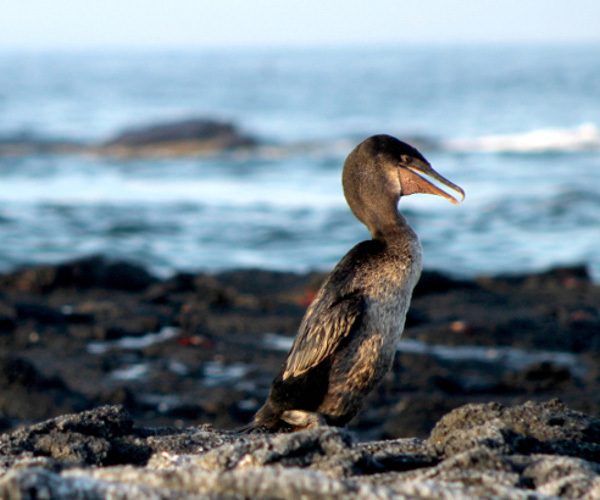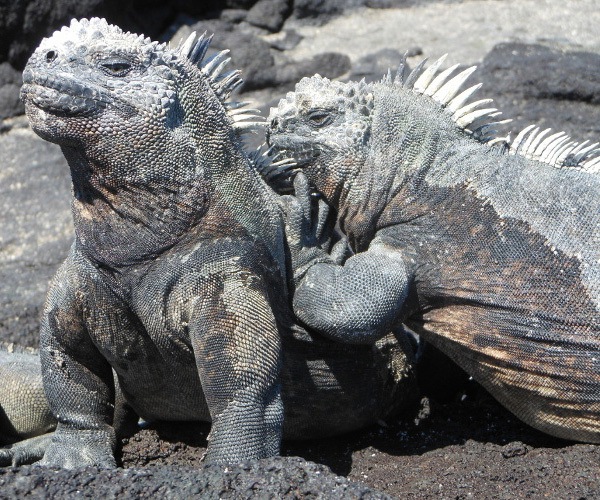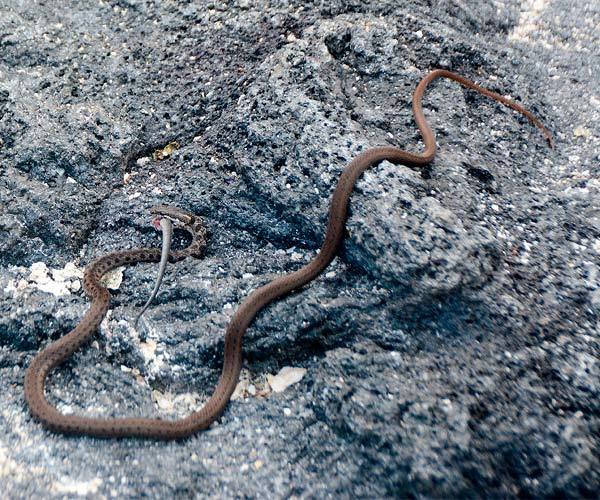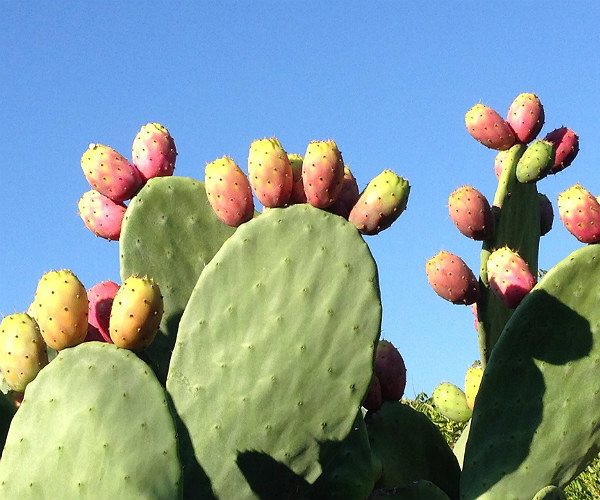5 unique adaptations in the Galapagos Islands
The Galapagos Islands are a living laboratory of evolution. The strikingly unique life found in the archipelago, both on its shores and below the surface, attracts researchers and visitors from all over the world. Tourists are able to walk the islands’ trails, and observe plant and animal species found nowhere else on earth, just as Charles Darwin did more than 150 years ago. To this day, never-before-seen species continue to shock experts with their exceptional techniques for survival in this evolutionary hotspot. Birds that have lost their ability to fly, terrestrial snakes that have started fishing, blood-thirsty finches, and the list goes on. All of these animals and their adaptations can only be found on the world-famous Galapagos Islands.
The flightless cormorant
The flightless cormorant was one of the first species that immediately attracted Charles Darwin’s attention on the Galapagos Islands. The Galapagos flightless cormorant, endemic to the islands, is the largest cormorant species in the world and the only one that cannot fly; its puny wings are one-third the size required for it to fly. Darwin hypothesized that the bird had forfeited its ability to fly in favor of its ability to swim, taking advantage of the incredibly rich waters around the islands and weeding out potential competition. Researchers continue to support this hypothesis, adding that the cormorant may additionally have lost its ability to fly because it had no need to escape predators or migrate elsewhere; its ability to fly simply became redundant.
 The marine iguana
Charles Darwin was also struck by the salt-coated iguana he came across in the Galapagos archipelago. The marine iguana is the only ocean-faring lizard in the world, amazing Galapagos visitors with its outstanding adaptations that allow it to dive up to forty feet below the ocean surface. Among its numerous physical and behavioral adaptations, the marine iguana has a special gland connected to its nose that collects salt from the lizard’s blood stream. These agglomerations of salt are then released through its nose, which is why visitors often see them sneezing along the Galapagos shores. This iguana is also the only known animal that is able to shrink its vertebra as an adult during times of scarcity.
The marine iguana
Charles Darwin was also struck by the salt-coated iguana he came across in the Galapagos archipelago. The marine iguana is the only ocean-faring lizard in the world, amazing Galapagos visitors with its outstanding adaptations that allow it to dive up to forty feet below the ocean surface. Among its numerous physical and behavioral adaptations, the marine iguana has a special gland connected to its nose that collects salt from the lizard’s blood stream. These agglomerations of salt are then released through its nose, which is why visitors often see them sneezing along the Galapagos shores. This iguana is also the only known animal that is able to shrink its vertebra as an adult during times of scarcity.
 The vampire finch
Darwin’s finches have long been known as the prime example of evolution in the Galapagos Islands, yet they continue to offer surprises to Galapagos visitors. The thirteen species of Darwin finch all evolved from a common ancestor to take advantage of the many ecological niches in the Galapagos Islands, some evolving to consume seeds and nuts, and others consuming insects. The Vampire Finch, on the other hand, has found a particularly intriguing and successful niche, feeding on the blood of other birds, particularly nazca and blue-footed boobies. Perched on the back of its chosen victim, the Vampire Finch uses its sharp and pointy beak to peck at the bird’s skin until it is able to draw blood, at which point it laps up its meal. Oddly, this does not appear to bother the other bird. Researchers suppose this is because of previous symbiotic relationships that existed between the bird species, when the finches pecked at the larger birds’ backs, grooming them of any parasites.
Fish-eating snake
Towards the end of the twentieth century, biologist Godfrey Merlin found proof that evolution continues to fight its battle in these untouched islands. The Galapagos Racer was previously known to only consume land mammals, i.e. lava lizards, rats, and hatchlings, but as Merlin stood by the ocean shore, he noticed the snake glide into the intertidal zone and rock pools, and catch unsuspecting fish. The racers on Fernandina Island appear to be the only Galapagos snakes that have picked up this intriguing practice, making it the only terrestrial snake in the world known to have discovered the joys of fishing.
The vampire finch
Darwin’s finches have long been known as the prime example of evolution in the Galapagos Islands, yet they continue to offer surprises to Galapagos visitors. The thirteen species of Darwin finch all evolved from a common ancestor to take advantage of the many ecological niches in the Galapagos Islands, some evolving to consume seeds and nuts, and others consuming insects. The Vampire Finch, on the other hand, has found a particularly intriguing and successful niche, feeding on the blood of other birds, particularly nazca and blue-footed boobies. Perched on the back of its chosen victim, the Vampire Finch uses its sharp and pointy beak to peck at the bird’s skin until it is able to draw blood, at which point it laps up its meal. Oddly, this does not appear to bother the other bird. Researchers suppose this is because of previous symbiotic relationships that existed between the bird species, when the finches pecked at the larger birds’ backs, grooming them of any parasites.
Fish-eating snake
Towards the end of the twentieth century, biologist Godfrey Merlin found proof that evolution continues to fight its battle in these untouched islands. The Galapagos Racer was previously known to only consume land mammals, i.e. lava lizards, rats, and hatchlings, but as Merlin stood by the ocean shore, he noticed the snake glide into the intertidal zone and rock pools, and catch unsuspecting fish. The racers on Fernandina Island appear to be the only Galapagos snakes that have picked up this intriguing practice, making it the only terrestrial snake in the world known to have discovered the joys of fishing.
 Prickly pear cactus
During your stay on the Galapagos Islands, be sure to pay particular attention to the plant life, which in some ways is even more astounding than the more well-known fauna. The Prickly Pear Cactus, like the finches, has rapidly evolved and adapted to the Galapagos Archipelago, branching into 14 distinct varieties, all endemic to the islands. One variety of this cactus in particular has grown into a smooth-trunked giant, reaching 40 feet tall. Lumbering saddleback tortoises love to feed on the cactus pads and trunks, and would easily destroy the cactus in an attempt to earn its rich food and important source of water, thus the plant has developed a hard, smooth bark, protecting it against the strong jaws of tortoises and sharp claws of land iguanas.
Prickly pear cactus
During your stay on the Galapagos Islands, be sure to pay particular attention to the plant life, which in some ways is even more astounding than the more well-known fauna. The Prickly Pear Cactus, like the finches, has rapidly evolved and adapted to the Galapagos Archipelago, branching into 14 distinct varieties, all endemic to the islands. One variety of this cactus in particular has grown into a smooth-trunked giant, reaching 40 feet tall. Lumbering saddleback tortoises love to feed on the cactus pads and trunks, and would easily destroy the cactus in an attempt to earn its rich food and important source of water, thus the plant has developed a hard, smooth bark, protecting it against the strong jaws of tortoises and sharp claws of land iguanas.
 Adrián Peñafiel is Corporate Commercial Officer at Metropolitan Touring. Metropolitan Touring shares the wonders of South America with the world’s explorers through memorable experiences in unique cultures and natural environments.
If you would like to be a guest blogger on A Luxury Travel Blog in order to raise your profile, please contact us.
Adrián Peñafiel is Corporate Commercial Officer at Metropolitan Touring. Metropolitan Touring shares the wonders of South America with the world’s explorers through memorable experiences in unique cultures and natural environments.
If you would like to be a guest blogger on A Luxury Travel Blog in order to raise your profile, please contact us.
 The marine iguana
Charles Darwin was also struck by the salt-coated iguana he came across in the Galapagos archipelago. The marine iguana is the only ocean-faring lizard in the world, amazing Galapagos visitors with its outstanding adaptations that allow it to dive up to forty feet below the ocean surface. Among its numerous physical and behavioral adaptations, the marine iguana has a special gland connected to its nose that collects salt from the lizard’s blood stream. These agglomerations of salt are then released through its nose, which is why visitors often see them sneezing along the Galapagos shores. This iguana is also the only known animal that is able to shrink its vertebra as an adult during times of scarcity.
The marine iguana
Charles Darwin was also struck by the salt-coated iguana he came across in the Galapagos archipelago. The marine iguana is the only ocean-faring lizard in the world, amazing Galapagos visitors with its outstanding adaptations that allow it to dive up to forty feet below the ocean surface. Among its numerous physical and behavioral adaptations, the marine iguana has a special gland connected to its nose that collects salt from the lizard’s blood stream. These agglomerations of salt are then released through its nose, which is why visitors often see them sneezing along the Galapagos shores. This iguana is also the only known animal that is able to shrink its vertebra as an adult during times of scarcity.
 The vampire finch
Darwin’s finches have long been known as the prime example of evolution in the Galapagos Islands, yet they continue to offer surprises to Galapagos visitors. The thirteen species of Darwin finch all evolved from a common ancestor to take advantage of the many ecological niches in the Galapagos Islands, some evolving to consume seeds and nuts, and others consuming insects. The Vampire Finch, on the other hand, has found a particularly intriguing and successful niche, feeding on the blood of other birds, particularly nazca and blue-footed boobies. Perched on the back of its chosen victim, the Vampire Finch uses its sharp and pointy beak to peck at the bird’s skin until it is able to draw blood, at which point it laps up its meal. Oddly, this does not appear to bother the other bird. Researchers suppose this is because of previous symbiotic relationships that existed between the bird species, when the finches pecked at the larger birds’ backs, grooming them of any parasites.
Fish-eating snake
Towards the end of the twentieth century, biologist Godfrey Merlin found proof that evolution continues to fight its battle in these untouched islands. The Galapagos Racer was previously known to only consume land mammals, i.e. lava lizards, rats, and hatchlings, but as Merlin stood by the ocean shore, he noticed the snake glide into the intertidal zone and rock pools, and catch unsuspecting fish. The racers on Fernandina Island appear to be the only Galapagos snakes that have picked up this intriguing practice, making it the only terrestrial snake in the world known to have discovered the joys of fishing.
The vampire finch
Darwin’s finches have long been known as the prime example of evolution in the Galapagos Islands, yet they continue to offer surprises to Galapagos visitors. The thirteen species of Darwin finch all evolved from a common ancestor to take advantage of the many ecological niches in the Galapagos Islands, some evolving to consume seeds and nuts, and others consuming insects. The Vampire Finch, on the other hand, has found a particularly intriguing and successful niche, feeding on the blood of other birds, particularly nazca and blue-footed boobies. Perched on the back of its chosen victim, the Vampire Finch uses its sharp and pointy beak to peck at the bird’s skin until it is able to draw blood, at which point it laps up its meal. Oddly, this does not appear to bother the other bird. Researchers suppose this is because of previous symbiotic relationships that existed between the bird species, when the finches pecked at the larger birds’ backs, grooming them of any parasites.
Fish-eating snake
Towards the end of the twentieth century, biologist Godfrey Merlin found proof that evolution continues to fight its battle in these untouched islands. The Galapagos Racer was previously known to only consume land mammals, i.e. lava lizards, rats, and hatchlings, but as Merlin stood by the ocean shore, he noticed the snake glide into the intertidal zone and rock pools, and catch unsuspecting fish. The racers on Fernandina Island appear to be the only Galapagos snakes that have picked up this intriguing practice, making it the only terrestrial snake in the world known to have discovered the joys of fishing.
 Prickly pear cactus
During your stay on the Galapagos Islands, be sure to pay particular attention to the plant life, which in some ways is even more astounding than the more well-known fauna. The Prickly Pear Cactus, like the finches, has rapidly evolved and adapted to the Galapagos Archipelago, branching into 14 distinct varieties, all endemic to the islands. One variety of this cactus in particular has grown into a smooth-trunked giant, reaching 40 feet tall. Lumbering saddleback tortoises love to feed on the cactus pads and trunks, and would easily destroy the cactus in an attempt to earn its rich food and important source of water, thus the plant has developed a hard, smooth bark, protecting it against the strong jaws of tortoises and sharp claws of land iguanas.
Prickly pear cactus
During your stay on the Galapagos Islands, be sure to pay particular attention to the plant life, which in some ways is even more astounding than the more well-known fauna. The Prickly Pear Cactus, like the finches, has rapidly evolved and adapted to the Galapagos Archipelago, branching into 14 distinct varieties, all endemic to the islands. One variety of this cactus in particular has grown into a smooth-trunked giant, reaching 40 feet tall. Lumbering saddleback tortoises love to feed on the cactus pads and trunks, and would easily destroy the cactus in an attempt to earn its rich food and important source of water, thus the plant has developed a hard, smooth bark, protecting it against the strong jaws of tortoises and sharp claws of land iguanas.
 Adrián Peñafiel is Corporate Commercial Officer at Metropolitan Touring. Metropolitan Touring shares the wonders of South America with the world’s explorers through memorable experiences in unique cultures and natural environments.
If you would like to be a guest blogger on A Luxury Travel Blog in order to raise your profile, please contact us.
Adrián Peñafiel is Corporate Commercial Officer at Metropolitan Touring. Metropolitan Touring shares the wonders of South America with the world’s explorers through memorable experiences in unique cultures and natural environments.
If you would like to be a guest blogger on A Luxury Travel Blog in order to raise your profile, please contact us.Did you enjoy this article?
Receive similar content direct to your inbox.

